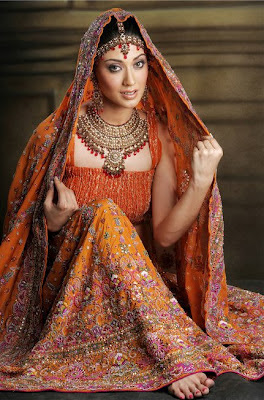Clothing In India Definition
Source(google.com.pk)The cotton industry in ancient India was well developed, and several of the methods survive until today. Herodotus, an ancient Greek historian described Indian cotton as "a wool exceeding in beauty and goodness that of sheep". Indian cotton clothing was well adapted to the dry, hot summers of the subcontinent. Most of the present knowledge of ancient Indian clothing comes from rock sculptures and paintings in cave monuments such as Ellora. These images show dancers and goddesses wearing what appears to be a dhoti wrap, a predecessor to the modern sari.The upper castes dressed themselves in fine muslin and wore gold ornaments The Indus civilisation also knew the process of silk production. Recent analysis of Harappan silk fibres in beads have shown that silk was made by the process of reeling, a process known only to China until the early centuries AD.According to the Greek historian Arrian:The Buddha, in Greco-Buddhist style, 1st–2nd century CE, Gandhara(Modern eastern Afghanistan)."The Indians use linen clothing, as says Nearchus, made from the flax taken from the trees, about which I have already spoken. And this flax is either whiter in colour than any other flax, or the people being black make the flax appear whiter. They have a linen frock reaching down halfway between the knee and the ankle, and a garment which is partly thrown round the shoulders and partly rolled round the head. The Indians who are very well-off wear earrings of ivory; for they do not all wear them. Nearchus says that the Indians dye their beards various colours; some that they may appear white as the whitest, others dark blue; others have them red, others purple, and others green. Those who are of any rank have umbrellas held over them in the summer. They wear shoes of white leather, elaborately worked, and the soles of their shoes are many-coloured and raised high, in order that they may appear taller."Evidence from the 1st century AD shows some cultural exchanges with the Greeks. Indo-Greek influence is seen in the Greco-Buddhist art of the time. The Buddhas were portrayed as wearing the Greek himation, which is the forerunner of the modern sa?ghati that forms a part of the Kasaya of Buddhist monks. During the Maurya and Gupta period, the people continued to wear the three piece unstitched clothing as in Vedic times. The main items of clothing were the Antariya made of white cotton or muslin, tied to the waist by a sash called Kayabandh and a scarf called the Uttariya used to drape the top half of the body.
New trade routes, both overland and overseas, created a cultural exchange with Central Asia and Europe. Romans bought indigo for dyeing and cotton cloth as articles of clothing. Trade with China via the Silk road introduced silk textiles into India. The Chinese had a monopoly in the silk trade and kept its production process a trade secret. However, this monopoly ended when, according to legend, a Chinese princess smuggled mulberry seeds and silkworms in her headdress when she was sent to marry the king of Khotan (present day Xinjiang). From there, the production of silk spread throughout Asia, and by AD 140, the practise had been established in India. Chanakya's treatise on public administration, the Arthashastra written around 3rd century BC, briefly describes the norms followed in silk weaving.
What makes the Indian couture so unique is the fact that you will find each and every state of the country having its own distinct traditional clothing for men and women. For instance, the salwaar kameez is the ethnic attire of women in Punjab; the Mekhala Chadar is worn by Assamese women, and so on. However, all types of Indian clothing look very elegant and Indians wear them with a lot of pride. The festivities and other special occasions are the time when you can see maximum Indians donning their ethnic garb, be it sari, kurta pajama or dhoti.
Clothing In India


Clothing In India

Clothing In India

Clothing In India

Clothing In India

Clothing In India

Clothing In India
.jpg)
Clothing In India
.jpg)
Clothing In India
.jpg)
Clothing In India
.jpg)
No comments:
Post a Comment